In the Studio: Christian Việt Đinh
“My nail salon series is meant to celebrate the success of the Vietnamese nail s...
Mie Kongo is an artist based in Illinois and a 2021 recipient of the Joan Mitchell Fellowship. We interviewed her about her work and studio processes in May 2022. The following is an edited transcript of that conversation.
My work is concerned primarily with form, space, composition, balance, and materiality, and my sculptures are essentially geometric abstractions. In general, I begin a piece intuitively and then become more deliberate once I start seeing the direction and having more thoughts and feelings that I want to communicate through the work.
I have a “fragment bank,” which is a collection of all kinds of fragments, left-overs, works-in-progress, and odds and ends. My fragment bank is made up of objects that appeal to me but that haven’t yet been included in a work. For example, occasionally I go to my friend's furniture workshop to pick up wood scraps. I choose the wood pieces that interest me, often looking specifically for odd pieces. I don't necessarily use them right away, but I keep them on my shelves until an idea emerges. When I cut out a wood piece, I often find the negative piece as interesting as the positive, and so the negative piece becomes the next focal point for a work.
When I'm working on a piece, I frequently try out many different combinations of materials, shapes, colors, and so on. During this process I might notice something that delights me but that doesn’t quite work with the piece, so then it becomes part of the bank. Later, I pull out the part, and it becomes the start of something new. I also pay attention to accidental shapes and combinations of materials, which are often created when I’m clearing off my table and floor for more workspace. When I’m cleaning, I stack materials without thinking; these stacks might provoke some ideas, and I try not to miss them.
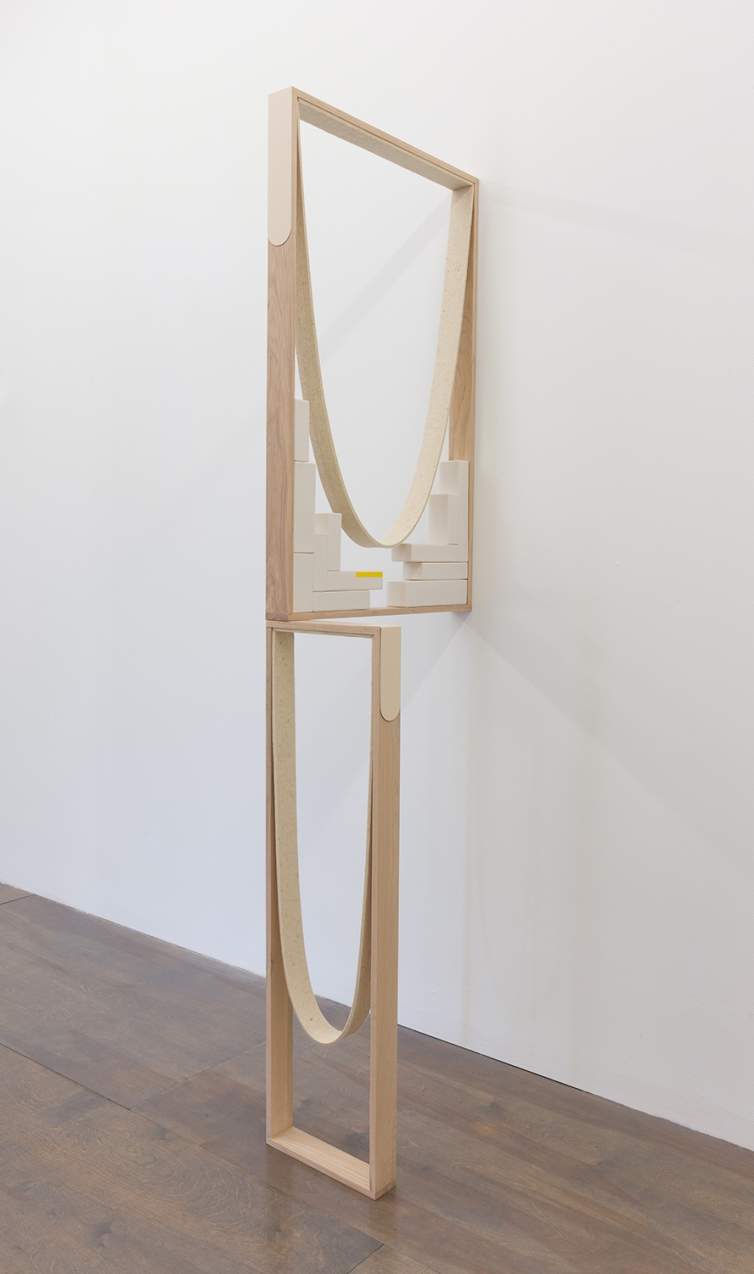
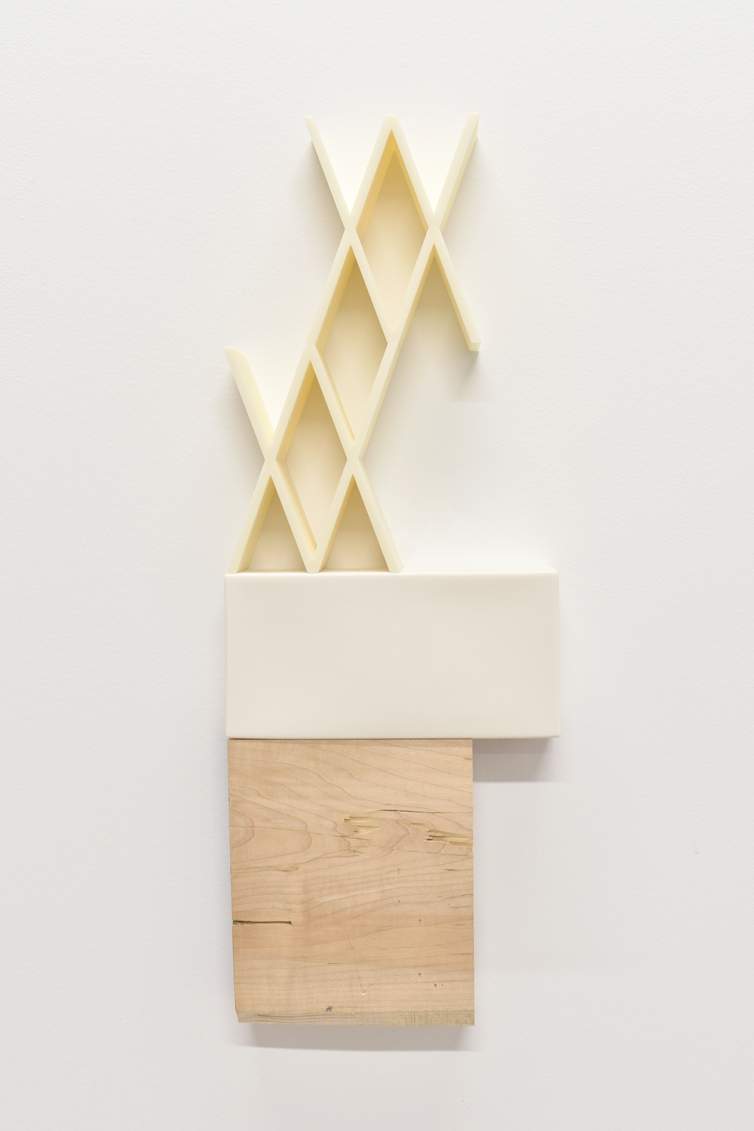
After an exhibition concludes, or before I start a new group of works, I give myself what I think of as “gathering time.” I go out and search for new ideas, materials, and fragments. I conduct material research and experiment in my studio. I read books, catalogs, magazines, etc., and look through snapshots from the past. Sometimes I just mindlessly browse the internet for inspiration or make random drawings in Rhino to be potentially printed out for future work. This time is quite important for me. Right now, I'm currently in a “gathering time” while I'm also working on several unresolved pieces and works in progress—pieces that could not be resolved by a deadline or finished with certainty. I find that sometimes having a break for a while and then going back to the piece, re-working it without the pressure of time, can lead to an unexpected outcome. By changing one small part—a shape, size, color, or surface finish—my least favorite piece can suddenly turn into a favorite piece, and I enjoy the moment immensely every time that happens.
My artistic influences and frames of reference come from many sources, including minimalism, various types of architecture, traditional Japanese pottery making, and my upbringing in a Buddhist temple. I was born in Japan and moved to Chicago about thirty years ago. My father, who passed away in 2020, was a Buddhist priest, and I grew up in a temple. To be honest, when I was growing up, I did not really appreciate the environment I was in. I was eager to leave and experience something completely different. But working with clay making ceramic wares in the US gave me an opportunity to look back to where I came from, and it changed the way I see and think about myself, my country, and the world. I have started to discover and understand more and more about what my upbringing instilled in me.
In the temple, I was surrounded by objects made of natural materials with care and attention, and I learned to appreciate craft, both as a process and as a product. There’s a reason why we feel the way we do when we are in an environment that is filled with things made with thoughtful craftsmanship, and it is a humbling experience. I find many inspirations for my own work every time I go home to that temple. My husband said that when he visited the temple years ago, he saw the sources of the things I make—the shapes, proportions, grids, etc. When he looked at the shape of the roof of the temple, he could see the reason why I like a particular curve and why I repeatedly employ it in my work, consciously or subconsciously.
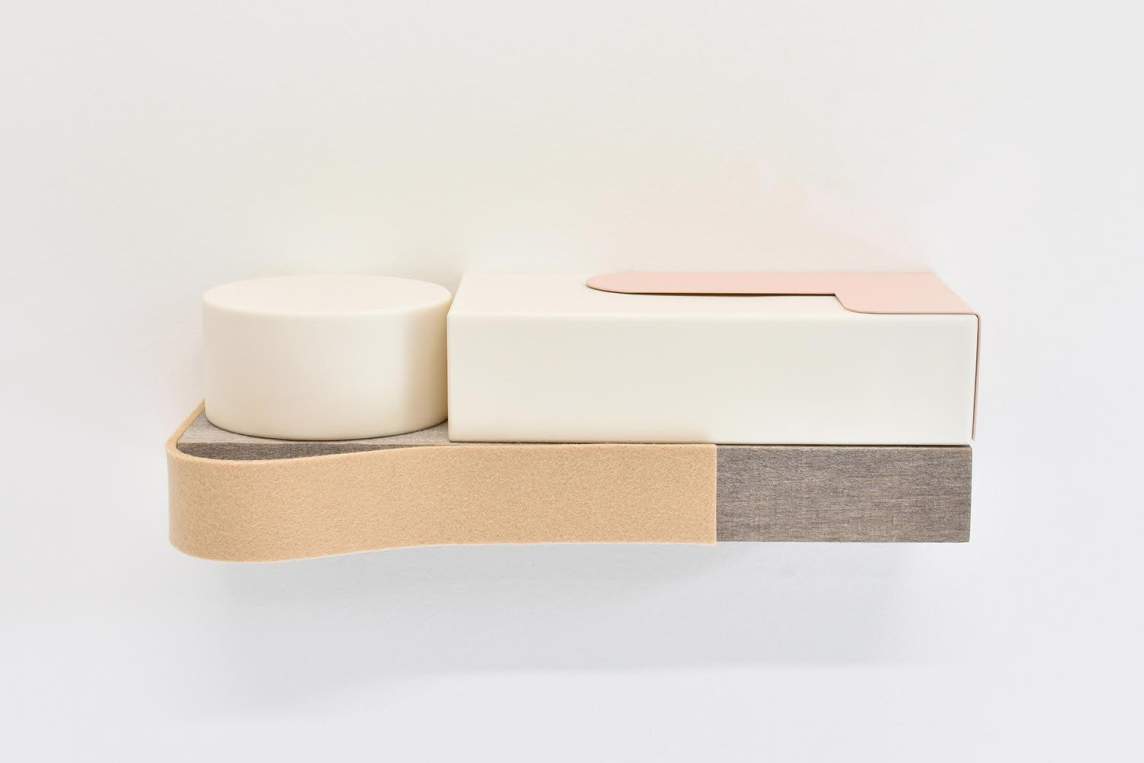
I use multiple materials in my sculptures, but my focal point is the porcelain, and I tend to choose colors for my sculptures that work with the color of the porcelain, which is white but translucent and appears to be a warm white when natural light is present. I choose colors around it to give a sense of lightness because my porcelain components are boxy. At the same time, I also think of color as an element that has the effect of manipulating space. For example, I use acrylic spray paint because the matte-ness and flatness of the paint appeal to me. It creates an interesting juxtaposition next to the translucent depth of the porcelain. I have also been experimenting with using color for painterly effect with brushes. I now want my sculpture to have a painterly aspect that offers an interesting texture, sense of movement, artificial depth and flatness, the trace of hands. I want the viewers to look at my work and not immediately know what they're looking at. Hopefully that initial confusion will solicit an inquiry and make the audience stay and look at the work just a little longer.
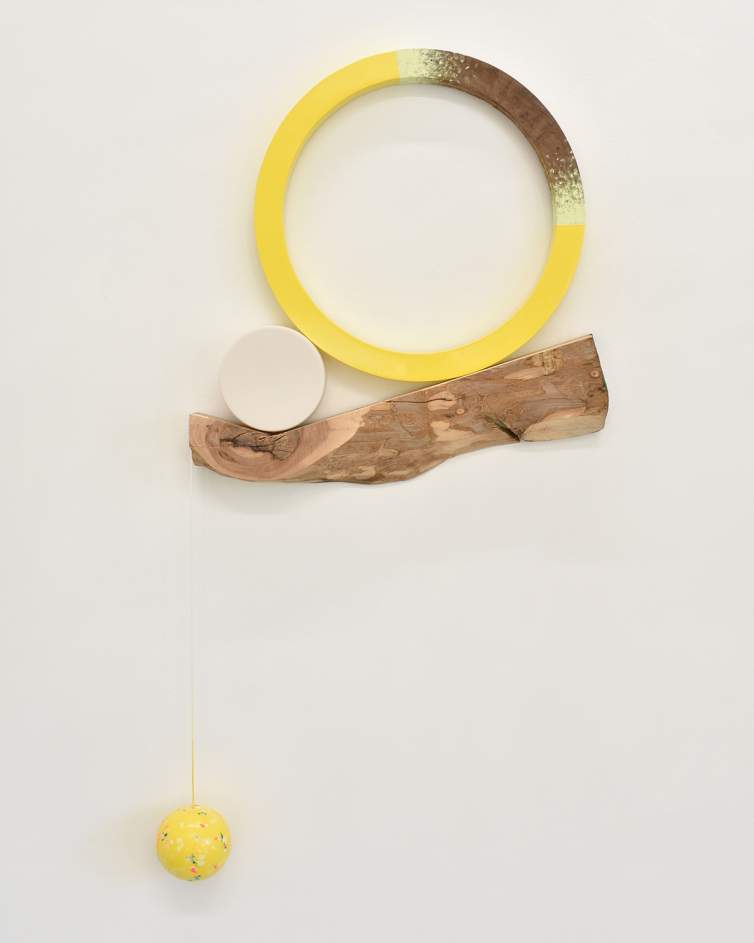
I sometimes make a work that has a story behind it that gives the work its title. One of these recent works is called Punctuation. Punctuation has a circular wood piece—three quarters of which I painted yellow with light green dots, with a brush—sitting on top of a found applewood piece along with a cylindrical porcelain piece. I hung it on my studio wall, and it stayed there for a long time. There were many days that I sat on a chair and looked up at the piece because I knew it needed something more.
One day, I realized that the circular piece reminded me of the light that my family used to have in the house I grew up in, above the dining table. It was a circular fluorescent light with a boxy lamp shade hanging from the ceiling, and there was a string to pull to turn it on and off. That type of light fixture was commonly used in a traditional tatami room in Japan when I was growing up, but I believe it has become obsolete now. I realized what the piece was missing, so I then hung, from a Mason’s string, a wooden sphere that I had painted yellow with white, pink, and green speckles.
I thought about the action of pulling the string, how the action demarcates time, and how the sound of pulling the string affects us psychologically. After the sun goes down, we pull the string to turn on the light; then, after dinner and our night activities, we pull it again to mark the end of the entire day. The action of pulling the string is like placing a punctuation mark in our daily life. In 2021, I was experiencing something very close to homesickness because I hadn’t seen my family for almost two years due to the pandemic; I think I was reminiscing about my home in Japan as I worked on this piece.
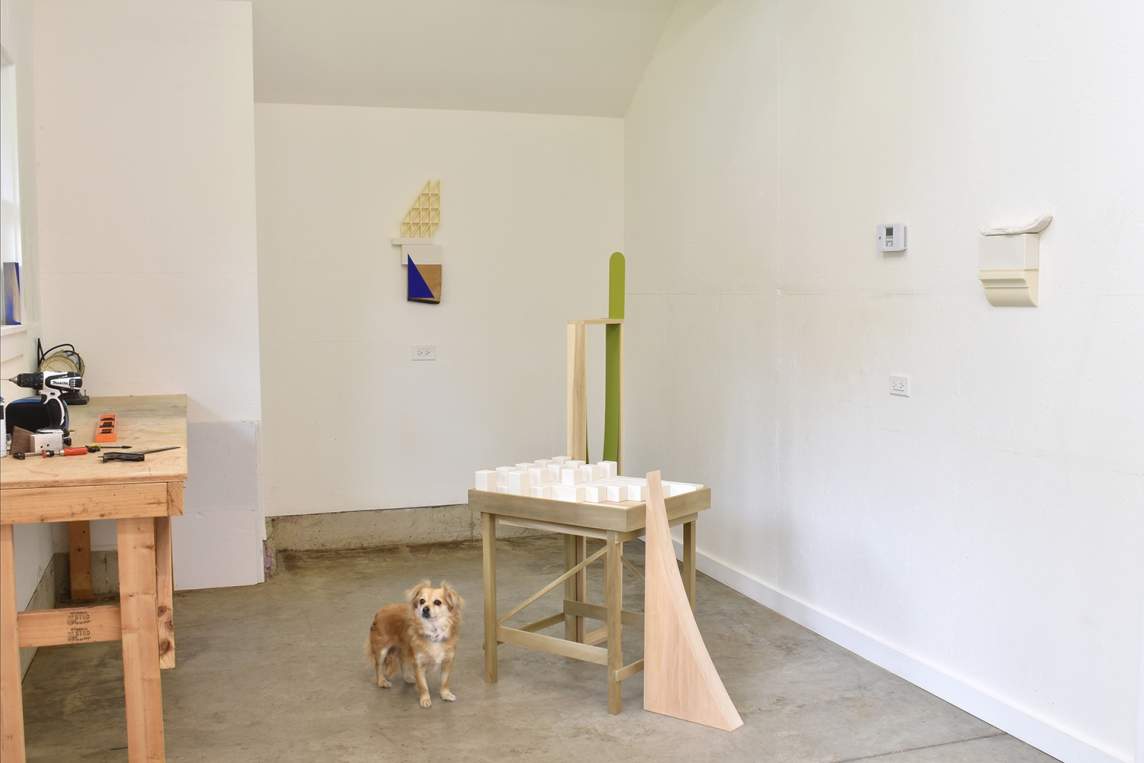
When the spring teaching semester ended, I started improving my studio—cleaning, re-organizing, building new shelves and table, repairing the walls, etc. I feel these improvements help me work more comfortably and create more mental space as well. It’s like a fresh start, which I feel I need after having lived the pandemic life for more than two years. I am ready for a change in my environment.
There are some new ideas and experiments that I am excited to try this summer after returning from my long-awaited trip to Japan. I’m building a bigger table, for example, so I can roll a bigger clay slab and hand build something larger. I frequently think about what new elements I can introduce to my porcelain blocks, and I have been craving working with clay more lately. I am interested in incorporating flat or planar components to create spatially encompassing work. I’m using wool felt right now as a flexible material that provides a linear component, and I keep searching for materials that I can use as planar elements in my sculpture.
Interview and editing by Jenny Gill. Learn more about Mie Kongo’s work at miekongo.com.